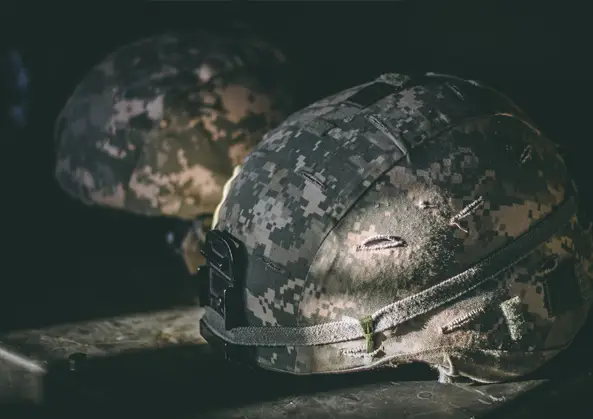
Military Applications for Carbon Graphite Materials
Synthetic and even natural graphite are used by the government in several military applications due to the unique properties of graphite materials, including their high strength, thermal stability, electrical conductivity, and lightweight characteristics. Warfare is an extreme human activity and is practiced in extreme conditions. Carbon graphite and extreme conditions are no strangers, of course. When exposed to high temperatures, graphite materials have the advantage over metals in that they do not soften or warp, and high pressures do not force it out into different shapes. Natural graphite, and to a greater extent synthetic graphite, are thus highly stable materials and are prized by the government and industry for that reason. Below, we will explore some of the more common uses of carbon graphite in the defense industry.
Stealth Technology
Synthetic graphite composites and coatings are used in stealth technology to reduce radar cross-section and make military aircraft and vehicles less detectable to radar systems. These materials can absorb and dissipate radar waves, making them especially essential for stealth aircraft design.
Munitions
Synthetic graphite is used in the construction of rocket nozzles, artillery shells, and various munitions due to its high-temperature resistance and ability to withstand extreme conditions. It can also be used in guidance systems and as a material for igniters and fuses.
Heat Shields
Synthetic graphite is employed in the manufacture of heat shields and ablative materials for military spacecraft, missiles, and re-entry vehicles. These materials, often used on nose cones for instance, protect the vehicles from the intense heat generated during re-entry into Earth's atmosphere, which can be as high as 5000℉.
Electrochemical Systems
Graphite electrodes and bipolar plates made from synthetic graphite are used in electrochemical systems, such as fuel cells and batteries, that are utilized in military applications, such as unmanned vehicles and portable power sources (we detail graphite’s role in hydrogen fuel cells in another blog this month).
Lightweight Armor
Composite materials containing synthetic graphite are employed in the development of lightweight armor for military vehicles and personnel. These materials, especially graphene, a graphite extract made of pure carbon, provide protection against projectiles and explosive devices while keeping the overall weight manageable. Graphene is known to be stronger than kevlar, the most common material in body armor, and even stronger than steel, especially in its tensile strength and ability to dissipate kinetic energy.
Electrical Components
Synthetic graphite is used in various electrical components, including brushes for generators and electric motors, connectors, and switches in military equipment. Its electrical conductivity and low friction properties make it suitable for these applications.
Communication Systems
While carbon graphite materials can absorb and disrupt communication signals (see the “Stealth” category above), they are also essential components to communication systems. Synthetic graphite can be used in the construction of radar components, antennas, and radio frequency (RF) devices for military communication systems, helping to enhance signal transmission and reception capabilities.
UAVs and Drones
Synthetic graphite is used in the manufacturing of lightweight and high-strength components for unmanned aerial vehicles (UAVs) and drones used in surveillance, reconnaissance, and other military missions.
Propulsion Systems
Synthetic graphite is used in propulsion systems for missiles, rockets, and military aircraft. Its ability to withstand high temperatures and pressures makes it a valuable material for jet engines and other propulsion components.
Infrared Windows
Synthetic graphite can be used as a protective window for IR sensors and detectors on military equipment. These windows allow for the transmission of IR radiation while providing protection from external elements.
